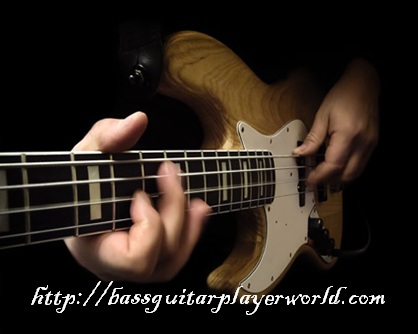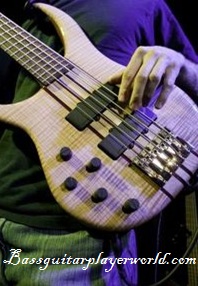Things to Be Aware of When Playing Music in Major Keys
 Power is one of the first words that come to mind when considering bass guitar. Massive low end, unquestionable groove capabilities, and among other things, bass guitar is fun.
Power is one of the first words that come to mind when considering bass guitar. Massive low end, unquestionable groove capabilities, and among other things, bass guitar is fun.
That being said, it should be no surprise that bass guitar and major keys go hand in hand. The major keys are the most full sounding, powerful keys in modern music.
Today we will be discussing playing bass guitar in major keys. The major keys are the most basic keys, and most modern music is built solely around them. In total, there are seven basic major keys, and each is just as powerful as the last.
Some Fundamental And Preliminary Theory
The first thing to consider when playing any key is your instrument. You need to know you bass neck inside and out to be able to play within any given key. This means intervallic relationships between frets, as well as note values.
All notes are divided by a half step, and each half step has two names depending upon the scales properties. These notes are called enharmonic notes, which mean they sound the same but are played differently. Of the seven major scales, only one scale contains no accidentals. This scale is the C Major scale.
If you do not know the basic notes of the bass fret board, it is highly suggested that you take the time to learn them. Simply creating a worksheet and studying the notes and their spacing can help you to memorize the notes. If you still have trouble afterwards, try singing the notes, or saying their names as you play them.
How Do You Know When to Play What Note?
 To play bass in a major scale, you need to follow the chosen scales notes. Because C Major has no sharps or flats, this will be the easiest place to start. If you were to play bass in the key of C Major, you would be open to play any note within the scale along the neck, regardless of the position. This means you could play C, D, E, F, G, A, and B. This also means that accidentals are off limits.
To play bass in a major scale, you need to follow the chosen scales notes. Because C Major has no sharps or flats, this will be the easiest place to start. If you were to play bass in the key of C Major, you would be open to play any note within the scale along the neck, regardless of the position. This means you could play C, D, E, F, G, A, and B. This also means that accidentals are off limits.
One simply mistake musicians make is misunderstanding scale degrees; just because you are in a major scale, doesn’t mean every chord you can create will be a major chord on the bass guitar. For example, if you were to create a C Major subtonic triad, which would begin on the second note of the scale, D, the triad would actually be a minor triad.
The notes involved would be D, F, and A. Understanding scale degrees is another important aspect of playing bass guitar in a major key. The most interesting thing about these keys is that as powerful and upbeat as they primarily are, because they can achieve minor properties, they can be used to convey powerful emotions such as sadness.
Now that you understand how to play bass guitar in a major scale, the next step is to put the knowledge to use. Try out different major scales, see which you like best and work with them to create different pieces. Try to achieve different emotions with the scales, keep them versatile, and most of all, have fun.
See Huge Improvements In Your Playing Immediately
If you are serious about learning to play the bass, check out JamPlay. They offer the best online instructional content to help you achieve short term and long term goals. With lessons taught by some of the most famous bassists in the world and new content being added on a weekly basis, you can learn whatever you want at your own convenience!
Jamplay is absolutely fantastic and is highly recommended. Check them out today!
Related Articles
Comments are closed.





